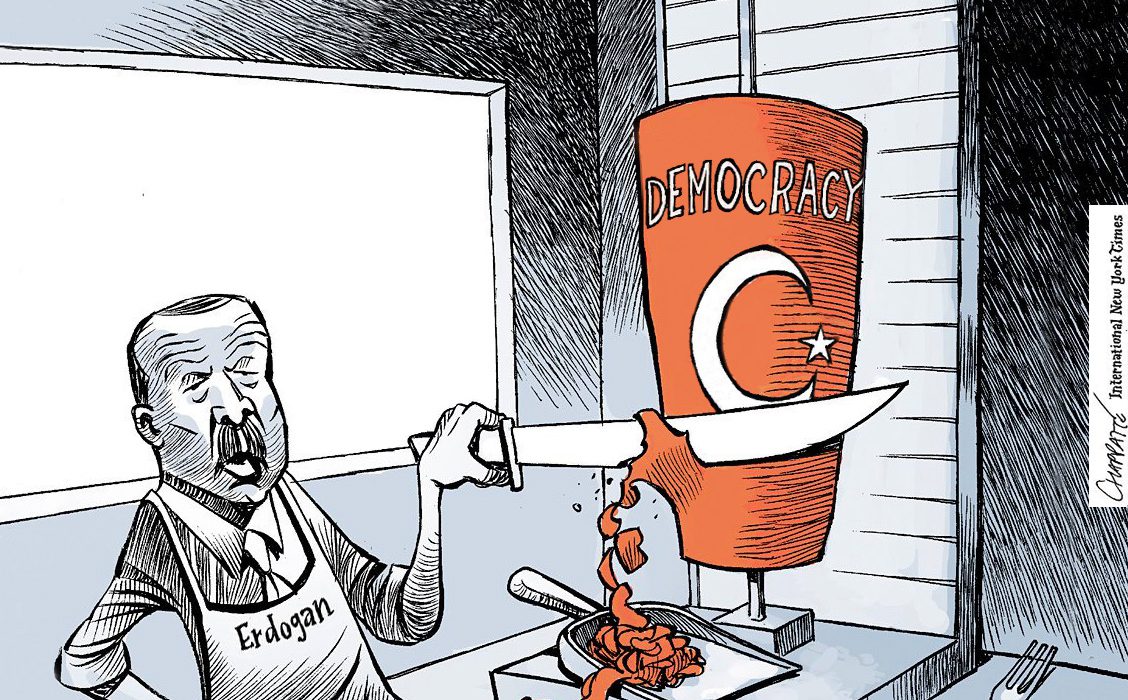Democracy at Risk
Definitions of Democracy
Democracy can be defined as, literally, the rule by the people. The term is derived from the Greek dēmokratiā, coined from dēmos (“people”) and kratos (“rule”) in the 5th century BCE. At heart, democracy is based on three principles: popular sovereignty, political participation and political contestation. Democracies may take on different constitutional forms (constitutional monarchy, republic) and modes of territorial organisation (unitary, federal).
The ballot box (free, fair and regular elections) defines democracy at its most basic. This minimalist or “thin” conception of democracy can be opposed to a more substantial or “thick” definition holding that in addition to elections, democracy needs to satisfy a series of further constitutional, liberal and/or social criteria.
In a direct democracy the people govern sovereignly by congregating in popular assemblies and taking decisions by popular vote (usually by show of hands, as in the Swiss cantons of Appenzell Innerrhoden and Glarus). There is no political representation. For thousands of years direct democracy remained the principal model of democracy as exerted in city-states or other small-scale polities.
Example: ancient Athens.
A representative or electoral democracy is a type of democracy where the people govern indirectly through elected representatives. It requires a set of political institutions different from those of direct democracy such as parliaments and regular elections. Representative democracy became prevalent in the 19th century with the emergence of large nation-states.
Liberal democracy is a subgenre of representative democracy defined not only by free and fair elections, but also by the rule of law, the separation of powers and the protection of basic civil liberties (freedom of speech, assembly and religion). Liberal democracies limit the exercise of executive power and majority rule through constitutions ensuring independent courts, the protection of minorities, and basic human rights.
Semidirect democracy is a mixed form of democracy where elected representatives govern and legislate but the citizens remain sovereign through referenda, initiatives and recalls. Even though today only Switzerland is a semi-direct democracy in the formal sense, many democracies have institutionalised elements of expression of popular will such as referenda.
Parliamentary democracy is a type of representative democracy where the executive branch of government depends on the support of the parliament, often expressed through a vote of confidence. The party that wins the largest number of congressional seats selects the prime minister, who controls the legislative process. The executive is divided into a head of government and a ceremonial head of state.
Examples: Australia, Germany, India, Spain.
Presidential democracy is a type of representative democracy where the executive branch is elected separately from the legislative branch. The parliament controls the budget, legislates, approves appointments to cabinet positions and ratifies foreign treaties. The president appoints cabinet members, commands the army and serves as the head of state and the head of government.
Examples: Argentina, Indonesia, United States, Venezuela.
Semi-presidential democracy is a type of representative democracy where a president exists alongside a prime minister and a cabinet. It differs from the parliamentary system in that it has a popularly elected head of state, who is more than a purely ceremonial figurehead, and from the presidential system in that the cabinet, although named by the president, is responsible to the legislature, who can move a motion of no confidence.
Examples: France, Russia, Tunisia.
Participatory democracy refers to a regime where citizens participate actively in public decision-making. Instruments to broaden citizen participation include e-democracy and e-voting.
In a deliberative democracy authentic deliberation, not mere voting, is the primary source of a law’s legitimacy. Jürgen Habermas has made a fundamental contribution to deliberative democracy through his work on communicative rationality and the public sphere.
In a proportional system parties obtain seats proportionally to the votes they win. In a plurality system, candidates who win most votes in an electoral district are elected. In a majority system, candidates who win more votes than all others combined in an electoral district are elected. Proportional representation usually leads to a multiparty system whereas plurality and majority election favour bipartisanism.



